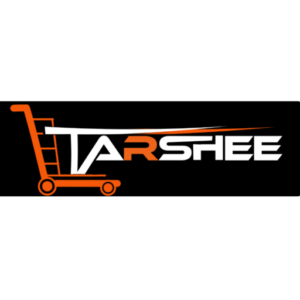Navigating Marketplace Fees: Essential Knowledge for Sellers’ Success

Selling on online marketplaces offers a valuable opportunity to reach a broader audience, but it’s essential for sellers to understand the associated fees. From listing fees to transaction and payment processing costs, these charges can impact your profit margins. Here’s an in-depth look at marketplace fees and strategies to minimize them for a successful, profitable selling experience.
1. Understanding the Types of Marketplace Fees
Each online marketplace has a unique fee structure, so let’s break down the main types of fees you’ll encounter:
- Listing Fees: Some platforms, like eBay, charge a fee per listing, meaning you’ll pay every time you list a product for sale, regardless of whether it sells.
- Transaction Fees: This is a percentage taken from the sale price once an item is sold. Most marketplaces, including Etsy and Amazon, charge a transaction fee, which can vary by product category.
- Payment Processing Fees: Payment processors like PayPal or marketplace-specific payment systems may charge a processing fee, typically a small percentage of the transaction plus a fixed amount.
- Subscription Fees: Many platforms, like Amazon, offer professional seller accounts with monthly subscription fees, which can include additional perks, such as access to specific tools or lower fees for high-volume sellers.
- Fulfillment Fees: If you use the marketplace’s fulfillment service (such as Fulfillment by Amazon), additional fees apply for warehousing, picking, packing, and shipping your items.
Understanding these fees is key to setting prices that preserve your profits.
2. Researching and Comparing Marketplace Fees
Fees vary significantly across platforms, so comparing marketplaces can help you choose the one best suited for your needs. Here’s a breakdown of major marketplace fees:
- Amazon: Transaction fees range from 6-45% depending on the product category. Subscription fees for professional sellers are around $39.99 monthly, and Fulfillment by Amazon (FBA) fees vary based on the product’s size and weight.
- eBay: Charges both listing and final value fees, which can be around 10-12.5% per sale, depending on the item category. eBay also offers fee discounts for sellers with a store subscription.
- Etsy: Has a $0.20 listing fee per item, a 6.5% transaction fee, and a 3% + $0.25 payment processing fee. It’s often a popular choice for handmade or vintage items but is best for lower-priced goods due to the fee structure.
Comparing the fee structures of different marketplaces ensures you’re choosing the most cost-effective option for your product and sales volume.
3. Calculating Your True Profit Margin
Once you know the fee structure, calculate your true profit margin to understand what you’re earning on each sale. Here’s how:
- Add All Fees: Combine the marketplace’s transaction fee, payment processing fee, fulfillment fee (if applicable), and any other costs.
- Consider Shipping Costs: Decide if you’ll offer free shipping or if customers will cover this cost. Factor in packaging materials and shipping insurance, if needed.
- Account for Cost of Goods Sold (COGS): Include the production or wholesale cost of each item, so you know exactly how much profit remains after all expenses.
By adding up these expenses, you’ll get a clear picture of your net earnings per sale, allowing you to price your products accurately and profitably.
4. Minimizing Fees to Maximize Profits
Sellers can implement strategies to reduce marketplace fees, especially if they’re selling on multiple platforms. Here are some effective ways to lower your costs:
- Choose the Right Subscription Plan: If you’re a high-volume seller, a subscription plan with lower per-item fees can save you money. Evaluate whether upgrading to a professional account or store subscription makes sense for your business.
- Optimize Listings to Avoid Unnecessary Relisting Fees: Some platforms charge listing fees per product relist, so optimize listings for visibility and searchability to help them sell faster.
- Leverage Platform Promotions: Some marketplaces offer fee discounts during promotional periods or for specific categories. Take advantage of these offers to save on transaction fees.
- Consolidate Inventory with Fulfillment Services: If you’re using FBA or a similar service, grouping items for bulk shipping to the warehouse can save on individual shipment fees.
Employing these techniques reduces costs, allowing you to retain more of your profits.
5. Understanding Refunds, Returns, and Associated Fees
Refunds and returns are a part of selling, and handling them can sometimes result in additional fees. Here’s what to consider:
- Return Fees: Some marketplaces, like Amazon, charge a return processing fee if you accept returns. Consider offering only buyer-paid returns unless customer experience is a primary focus.
- Restocking Fees: You may also be able to charge a restocking fee for returned items in certain cases, but this depends on the platform’s rules.
- Refund Transaction Fees: In some cases, the payment processing fee may not be refundable even if you issue a full refund. PayPal, for example, doesn’t return its processing fee.
Understanding how returns affect your fees can help you build a fair but firm return policy that protects your profits.
6. Tracking and Recording Fees for Tax Deductions
Keeping detailed records of your marketplace fees is essential for tax time. Many fees are deductible as business expenses, which can save you money on taxes:
- Keep Track of All Fees: Use accounting software or spreadsheets to log each fee as an expense. Track fees like transaction charges, subscription fees, and payment processing costs.
- Consult a Tax Professional: A tax advisor can help you understand which fees are deductible in your country or region.
- Maintain Records of Additional Expenses: Include shipping, packaging, and COGS for a complete tax deduction record.
By organizing and documenting fees, you can take advantage of tax deductions and optimize your earnings.
7. Utilizing Marketplace Tools to Optimize Costs
Many marketplaces offer tools that help sellers manage fees and make cost-effective choices. Here are a few examples:
- Amazon Seller Central Tools: Amazon’s Profitability Calculator lets you estimate fees and profits before listing a product. The Inventory Performance Index (IPI) helps you optimize your FBA stock to avoid excess storage fees.
- eBay Fee Calculator: Online calculators, including third-party eBay calculators, can estimate final value fees and suggest optimal listing strategies.
- Etsy Fee Calculator: Etsy-specific tools break down listing, transaction, and payment fees, helping sellers set realistic prices.
Marketplace tools provide insights that help sellers make data-driven decisions and avoid unnecessary fees.
8. Offering Free Shipping or Adjusting Pricing to Offset Fees
Free shipping is attractive to buyers, and some marketplaces prioritize listings with free shipping. Here’s how to integrate free shipping without losing profits:
- Include Shipping Costs in Product Price: By bundling the shipping fee into your product price, you can offer “free” shipping without absorbing the cost entirely.
- Calculate Shipping for Various Locations: If you sell internationally, consider adjusting shipping rates for different regions to avoid high fees from unexpected long-distance shipments.
- Consider Flat-Rate Shipping: For certain products, flat-rate shipping can simplify costs and create more predictable expenses.
Offering free shipping strategically boosts visibility and attracts buyers without sacrificing profit.
9. Understanding the Long-Term Impact of Fees on Your Business
Fees may seem minor at first, but over time they impact profitability. Assess how fees affect your business model and make necessary adjustments:
- Analyze Profitability Over Time: Regularly review sales data to identify high-cost items or underperforming listings that result in disproportionate fees.
- Optimize Your Product Selection: Focus on products with lower fee percentages relative to their sale price. Avoid products with slim margins where fees consume a large portion of revenue.
- Explore Multi-Channel Selling: Diversifying to multiple platforms can sometimes reduce reliance on one marketplace’s fee structure and help you test new revenue streams.
Long-term planning around fees helps ensure sustainable growth and profitability in the marketplace landscape.
10. Reviewing Fees Periodically and Staying Updated
Marketplace fee structures change over time, so it’s essential to stay informed about updates. Here’s how to stay on top of any changes:
- Check Marketplace Announcements: Follow official marketplace news or seller forums to learn about upcoming fee changes.
- Evaluate Your Pricing Strategy Regularly: Adjust prices periodically to reflect any increase in fees and maintain your margins.
- Join Seller Communities: Many online forums and seller groups discuss marketplace fees and strategies, allowing you to stay informed and adapt as needed.
By reviewing fees regularly, you can maintain a healthy profit margin and continue thriving on the marketplace.
Final Thoughts
Navigating marketplace fees requires a clear understanding of each platform’s cost structure and strategic planning. By tracking expenses, optimizing listings, leveraging marketplace tools, and setting competitive prices, you can minimize fees and maximize profits. Use these insights to build a strong, fee-conscious selling strategy that aligns with your long-term business goals.

